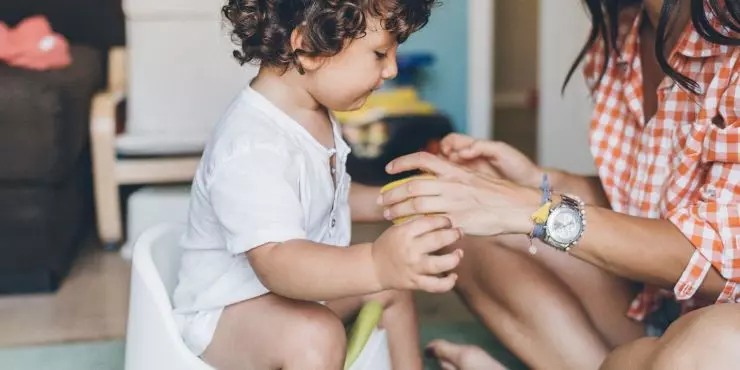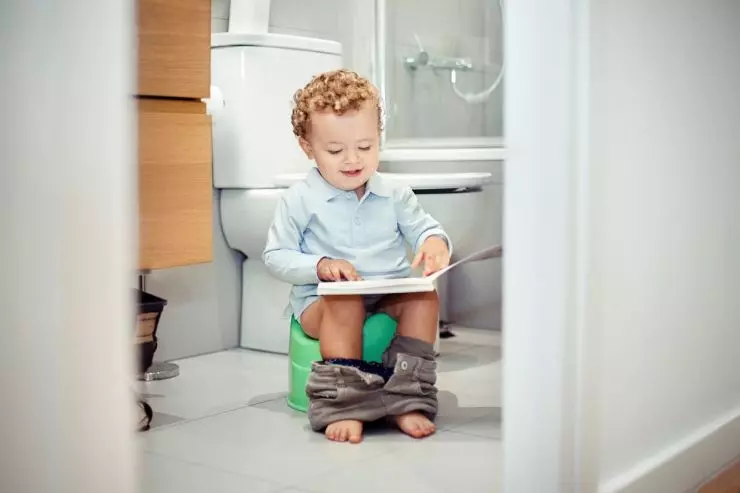
There is nothing more exciting than the thought of your baby no longer being in diapers! It can be bitter-sweet for some parents as you say good-bye to the baby years and move on to the toddler, early-childhood years. While this is a very exciting time, the journey to get to the goal of a potty-trained child can be frustrating and time-consuming.
With the right approach and a little patience, this can be a smooth and successful process, meaning no more poopy diapers, yes!
The Potty-Training Process and Tips
They are Showing Interest
The first step in potty training is recognizing readiness. Look for signs such as showing interest in the bathroom, allowing your child to come with you to the bathroom to help them become familiar. Another sign is a child who has a dry diaper most mornings. Every child is different, so it's crucial to be patient and wait until they exhibit signs of readiness. Avoid pushing a child who isn’t ready.
Create a Positive Environment
Like mentioned above, not only bring your child to the bathroom with you, but make the bathroom a comfortable and inviting place. Invest in a fun colorful child-sized potty chair or a seat insert for the regular toilet. Decorate the bathroom with things like colorful books or toys, to make it an enjoyable experience. Reading potty books to the child can help as well.

Get Into a Routine
Start to develop a potty routine. Encourage your child to sit on the potty chair or toilet at regular intervals throughout the day, especially after meals and naps. Additionally, make sure to take your child to the bathroom upon waking up and before bedtime. Consistency is key! This will help them learn when it's time to go. Be sure anyone spending time with your child follows this routine to help create consistency even when mom or dad are not there.
Demonstrate and Explain
Children learn by imitation, so demonstrate how to use the potty by allowing them to observe you or an older sibling. Explain the potty process using simple language. Use visual aids, such as picture books or videos, to help them understand the concept of using the toilet.
Encourage and Praise
Positive reinforcement plays a vital role in potty training. Encourage your child to use the potty and offer praise for their efforts, even if they don't succeed immediately. Celebrate small victories, such as sitting on the potty, using the potty successfully, or even trying their best. This positive reinforcement will boost their confidence and motivation.
Patience and Understanding
Potty training is a learning process, and accidents will happen. Remain patient and understanding throughout the journey. Avoid punishment or shaming your child for accidents, as this can lead to setbacks and create a negative association with the potty.
Transition to “Big Kid” Underwear
As your child becomes more comfortable using the potty, it's time to transition from diapers or pull-ups to underwear. Involve your child in the process by allowing them to choose their underwear, making it an exciting and empowering experience. Choosing their new “big kid” underwear is a big deal, and they should be excited about it.
Nighttime Training
Nighttime training usually takes longer than daytime training. It's important to be patient and continue using diapers or pull-ups until your child consistently wakes up dry. Limiting fluid intake before bedtime and encouraging them to use the bathroom right before sleep can also help.
Celebrate Success
Finally, celebrate your child's success! Give them praise and recognition for reaching each significant potty-training milestone. Then, gradually reduce the use of praise as they become more independent in using the potty.
Potty Training Just Not Working?
You have tried everything and are beyond frustrated on why your child won’t potty train, you are not alone. There are many reasons why a child may have difficulty potty training and your doctor is the best place for support.